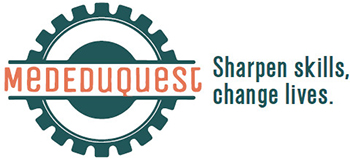The Guide to Practicing Phlebotomy at Home
As a basic clinical skill, phlebotomy is used in many medical situations, such as laboratory testing and transfusion therapy. Proper phlebotomy techniques are essential to ensure the safety and efficacy of the procedure. However, clinical practice opportunities are often limited, and many medical and nursing students would like to have additional practice at home in order to master this skill. This article provides a comprehensive guide to practicing phlebotomy at home.
Why practice phlebotomy at home?
Limited clinical opportunities
Due to the limited opportunities of clinical placements, there are often fewer opportunities for each student to practice. Practicing at home can make up for this shortcoming and provide students with more time to practice.
The need for individualized practice
Each student’s basic level is different, and his or her mastery of certain techniques may vary. Practicing at home allows students to focus on their own weaknesses and conduct personalized, focused practice.
Safe and convenient practice environment
In the clinical environment, operation errors may bring risks to patients. Practicing at home avoids this problem and provides a safe and convenient environment for students to practice.
Preparation
Choosing the right phlebotomy model
When practicing phlebotomy at home, the first thing you need to do is to choose a high-quality simulation model. MedEduQuest offers a wide range of phlebotomy models, including adult phlebotomy practice arm models and infant phlebotomy practice models (insert link) versions, so that you can practice on different subjects.


Prepare necessary equipments
In addition to the phlebotomy model, you also need to prepare some basic equipment, and make sure that all the equipment is brand new and meets the hygiene standards. For example:
– Vacuum phlebotomy tubes/needles
– Tourniquet
– Cotton balls/alcohol swabs
– Personal protective equipment such as gloves
Steps to practice phlebotomy at home
Phlebotomy
– Clean the puncture site
– Use tourniquet to distend the vein.
– Insert the needle and collect the blood sample.
– Remove the needle and apply pressure to stop bleeding.
Specimen Handling
– Label the specimen to ensure accuracy
– Handle and transport the specimen according to laboratory requirements.
Tips for improving phlebotomy skills
Attention to detail
Although phlebotomy is a basic operation, it requires attention to detail. For example, the angle of the needle, the strength of the tourniquet, etc., all need to pay extra attention.
Correct body position
When collecting blood, the position of the patient and the operator are very important. Correct body position can make the vein more obvious, which is conducive to the operation.
Patience and concentration
During phlebotomy, it is important to remain patient and focused and not to rush the process. At the same time, we should also learn to communicate with the “patient” to ease the tension.
Summarize
Phlebotomy is one of the most basic and common operation skills in clinical work. Through independent practice at home, we can practice and master this skill in a safe and convenient environment. As long as we are well-prepared, have a good understanding of the correct operation procedures, and make persistent efforts, we believe that everyone can become an expert in phlebotomy skills.
Phlebotomy models are an important tool for practicing at home, and MedEduQuest’s phlebotomy practice models are designed to provide an immersive practicing experience through a high degree of simulation. Whether you are practicing in a clinical setting or in a professional training program, our products will help you improve your skills.

